| |
|

FRIDAY, JUNE 20 Temple Solel Freilich Friday
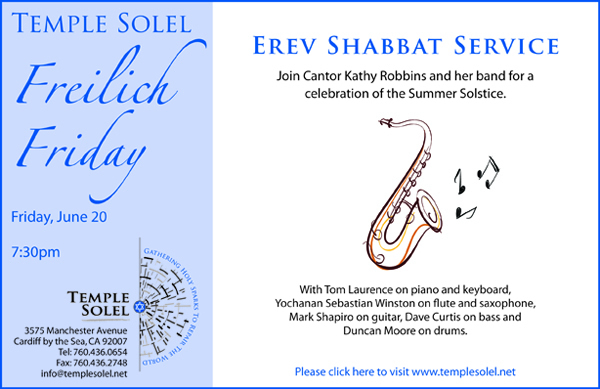

Friday, July 11 Congregation Beth El Kabbalat Shabbat Services




LETTER FROM JERUSALEM
Skepticism over Israel-Hamas ceasefire
By Ira Sharkansky
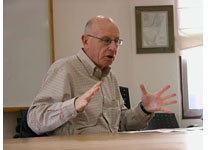 JERUSALEM—One definition of a good agreement is that no partner really likes it. JERUSALEM—One definition of a good agreement is that no partner really likes it.
That pretty much sums up how Israel and Hamas are viewing the terms of a cease fire for Gaza.
It does not give either partner what they had described as non-negotiable demands.
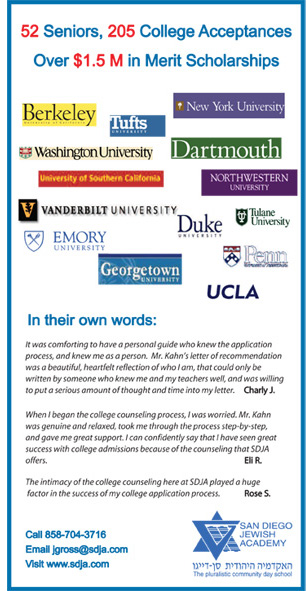 Voices on all sides are saying that the principle of a Hamas-Israeli agreement is intolerable, and that the details are lousy. Voices on all sides are saying that the principle of a Hamas-Israeli agreement is intolerable, and that the details are lousy.
Hamas spokesmen do not expect Israel to honor the agreement.
For Israelis, the agreement depends on Hamas controlling rivals for the leadership of Islamic radicalism, who may wish to provoke Israel with a rocket or two, and on Egypt to limit the inflow of arms to Hamas.
Members of Israel's military and political elite say that the agreement is fragile, and is not likely to last beyond a few days. Some describe it is a sell-out; an agreement with arch-terrorists that will prevent Israel from insisting that other governments not deal with Hamas. We hear that it is the product of a prime minister who will do anything to keep his job, and a defense minister who will do anything to advance his chances to become prime minister.
The agreement does not keep Israel from continuing its campaign against their Hamas' allies in the West Bank.
It does not assure the freeing of the Israeli soldier. It is not expected to cut the flow of arms to Hamas via Egypt, or to limit the capacity of Hamas to improve its political and military capacity to deal more forcefully with Israel in the future.
The several partners to the agreement (Israel, Hamas, other Islamic movements, and Egypt), are purveying different interpretations of what is agreed, and what will remain for further negotiations. None of this adds to optimism.
Those of you who think Hamas has won can volunteer to clean up the rubble in Gaza.
Be warned, however, that such altruism might provide quicker rewards in the world to come than in this world. Visitors might find themselves caught in the squabbles between Hamas and its rivals, or facing the onslaught of Israeli tanks and aircraft.
Israel has killed more than 500 Palestinians since the Annapolis meeting in November, and the number of prisoners in Israeli hands is somewhere in the range of 12,000.
Those numbers, and the meager flow of supplies let into Gaza, may explain why Hamas has agreed.
Israel's reasons are more complex: to give the people living near Gaza a respite from the mortars and rockets; to give Egypt a chance as a mediator; to strengthen support within Israel and elsewhere for the military campaign that may come.
No one that I have heard is saying that the agreement is a first step toward peace.
I recall one cease fire that lasted from 6 AM to 11 AM of the same day. We will see if this does better.
Among the possibilities:
- If it fails, it will unite Israel in a campaign to move more forcefully against Hamas.
- In that event, we can count on both Israel and Hamas to blame the other. The Israeli and international left will find support for its view that Israel does not depart from the policy of conquest. Others will find support for their view that agreements with Arabs are not worth the value of their paper.
- Whether the agreement fails, or stumbles on imperfectly, I will find support for my view that there is no solution to Israel's basic problem. It has to cope from one crisis to another. The point is not to make things worse. Heroic actions are seldom successful. Doubters should consider Iraq.
- The goal is to maintain and improve Israel's standing among the civilized, and to enjoy decent relations with them.
So far, so good. The European Community has upgraded Israel's status among non-members; candidates for the American presidency are competing with good words about their friendship; life is more than tolerable.
Not everybody loves us, but we have known that for a long time.


FROM THE SIDELINES
Jews and Canada's First Nations have much to learn from each other's experiences
By Rabbi Dow Marmur
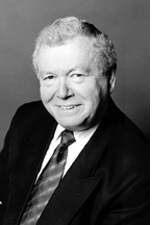 TORONTO—I never dispute the right of Canadians to criticize Israel over its policies toward Arabs, both in the country and the territories. However, when the subject comes up, I often remind my non-Jewish neighbors of their own history in relation to those who inhabited the land before the whites came. As in the rest of North America, the settlers dispossessed, decimated and demoralized generations of natives. The descendants of the usurpers find it much easier to criticize others, especially if they’re Jews, than to look at themselves and their history. TORONTO—I never dispute the right of Canadians to criticize Israel over its policies toward Arabs, both in the country and the territories. However, when the subject comes up, I often remind my non-Jewish neighbors of their own history in relation to those who inhabited the land before the whites came. As in the rest of North America, the settlers dispossessed, decimated and demoralized generations of natives. The descendants of the usurpers find it much easier to criticize others, especially if they’re Jews, than to look at themselves and their history.
In debates I often cite the Hasidic formula that teaches always to look after your own soul and the other’s body, not your own body and the other’s soul. Many Canadians who moralize about the way Jews treat Arabs in Israel violate this principle. Their primary concern seems to be Jewish souls.
Native leaders, on the other hand, usually respond well to Israel. When Jewish organizations sponsor their visits to the Jewish State to enable them to compare notes, they return with much greater understanding. They become aware of the at times intolerable burden of balancing human rights with security considerations. When one of them in another context made vile anti-Semitic remarks in public, most of his friends and colleagues distanced themselves from him. Jews and American native peoples have an affinity born in suffering, albeit on different continents and in very different contexts.
Natives believe that the white settlers robbed them of their land. Legal disputes about land rights have been going on for decades and no doubt will continue to do so for a long time. Despite the earnest attempts nowadays to treat minorities with justice, spokespersons for First Nations are rarely satisfied with the outcome of negotiations or court decisions. Life on native reserves continues to be hard. Unemployment is high, education inadequate and drug and alcohol abuse rampant. Rightly or wrongly, the white majority is blamed for much of it. Tensions between natives and Federal and Provincial authorities erupt at times into open conflict.
Some of the misery among Canada’s indigenous peoples stems from the abuse that individuals suffered in so-called residential schools. Until a few decades ago, Indian children would be snatched from their homes and taken to white schools to be “educated” in ways that would eradicate as much as possible of their origin and all of their religion, language and culture. The schools were run by Christian denominations. Many of the teachers there would abuse the children physically, sexually and psychologically.
These schools have been discontinued long ago and today’s Christian leaders, in an effort to look after their own souls, have sought to compensate the victims and their families. Of late the government of Canada has also formally acknowledged that, though not all white people are guilty, all are responsible. Prime Minister Stephen Harper rose recently in Parliament to issue an abject apology, accept collective responsibility and announce the establishment of a Truth and Reconciliation Commission on the South African model.
As the best integrated minority in most countries of the Diaspora, including Canada, Jews have a lot to teach. Apart from sharing in the general responsibility of all whites, we have specific ways of showing solidarity with, and offer help to, the downtrodden in our midst. The marked change of climate brought about by the Prime Minister’s apology gives us fresh opportunities to act.
It also offers opportunities to learn. For the actions of the Canadian government point to what Israel will have to do in order to bridge the growing gap between Jews and Arabs there. The sooner that’s done the less pain will be inflicted on the Arabs and the less shame will become the burden of the Jews.

Nancy Harrison
cruise & tour specialist
(619) 265-0808

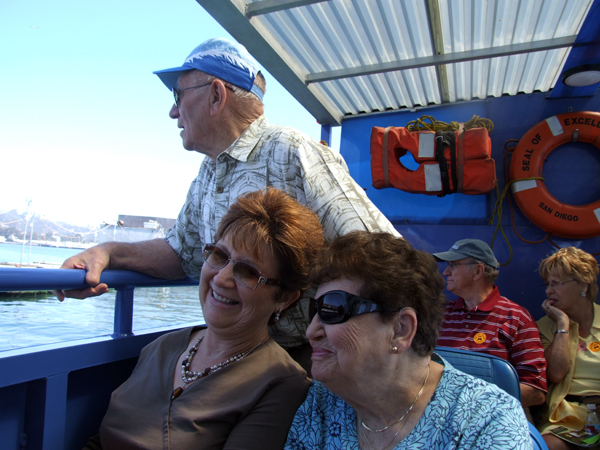
THE JEWISH CITIZEN
Have you ever tried making 'old' friends?
By Donald H. Harrison
 SAN DIEGO—I had the opportunity on Wednesday, June 18, to make not new friends, but old ones, and I recommend the process to everyone. By this, I mean that I got to know people with whom I was acquainted earlier in my life, but, being young and oblivious back then, I never expended the requisite time to learn much about them. I learned that they have led quite interesting lives. SAN DIEGO—I had the opportunity on Wednesday, June 18, to make not new friends, but old ones, and I recommend the process to everyone. By this, I mean that I got to know people with whom I was acquainted earlier in my life, but, being young and oblivious back then, I never expended the requisite time to learn much about them. I learned that they have led quite interesting lives.
Their names are Henry and Rachel Wheeler, and today as octogenarians they are living in retirement in Colorado. I knew them some 45 years ago when I was a student at UCLA and dating their daughter, Ruth. Both Ruth and I eventually married other people but over the years, we have stayed in touch.
Ruth telephoned from Los Angeles the other day to say that her parents were visiting in California and that they were planning to make a one-day excursion to San Diego. She said that her parents had expressed the desire after all these years to see me and Nancy. During those college years I had visited their home in Encino regularly, and I suppose they were just curious to see how I had turned out. Given that Ruth had three sisters—Melanie, Eleanor and Daphne—their home was a pretty lively place, especially for a guy who had an older brother but no sisters. I remember that the four Wheeler girls introduced me to the music of the Beatles, whom they adored.
What I knew about their parents, Rachel and Henry, really was quite limited. Rachel, I knew, was Israeli. He was Australian. She was Jewish, and he wasn’t –at least not back then. But that’s all I knew. And with four girls occupying my field of vision, it’s probably not surprising that my attention was otherwise diverted.
I rendezvoused with the Wheelers and daughter Ruth (Huberman) at Seaport Village where we had arranged to take the Seal Tour operated by the people of Old Town Trolley Tours of San Diego. Nancy was unable to join us because she wanted to drive her 89-year-old father, Sam Zeiden, to his dental appointment up in Carlsbad. But she kept in touch with us all by telephone.
The Seal Tour utilizes an amphibious vehicle for a narrated tour along the Embarcadero, and then after going down the boat ramp at Shelter Island, continues its excursion in that narrow portion of San Diego Bay dividing Point Loma from North Island Naval Air Station. The highlights of the bay segment are the sea lions and birds on the bait dock close to the submarine base at Ballast Point.
We continued our sightseeing day with lunch at the Harbor House Restaurant, a trip up to befogged Cabrillo National Monument and then a farewell cup of coffee at the recently refurbished Jolly Roger Restaurant in Old Town San Diego State Park. Along the way, I learned that Henry had served with the Australian armed forces in Palestine during World War II. He was stationed at a base north of the Gaza Strip. On liberty, he and a friend decided to explore a building they thought was a museum. Turned out it was not a museum, but a military facility used for teaching various courses. The two Aussies asked if they could be shown around, and two female Israeli soldiers were assigned as their escorts. One of them was Rachel.
Henry said he later learned that Rachel Hillel’s father was a well-known policeman who patrolled on horseback in the Galilee. One of the longest serving officers on the police force, her father was a popular figure both among Arabs and Jews who lived in the area. There was an impressive ceremony when the father retired, including the presentation of a Bible in a metallic cover.
Henry and Rachel dated for “several years” but those were the years of World War II. Henry’s unit was sent all over the Middle East. Rachel for a while was stationed in Egypt. So their dating career, when tallied up, really was not more than 10 dates. But that was enough for them to fall in love. After Henry’s unit was shipped to the South Pacific, she was able to arrange passage on a cargo ship to Australia. Henry, obtaining two-weeks leave from his unit, married Rachel two days after her arrival in Australia in 1944. As of now, they’ve been married over 63 years.
They raised their daughters as Jews, and frequently Henry accompanied Rachel on trips to Israel to visit her family. He fell in love with Israel, the Jewish people, and with Judaism. After he was already a grandfather, he decided to convert to Judaism—which he described emotionally as one of the best things he’d ever done in his life.
Up to then, he had been attending Shabbat services at Congregation Ohr Shalom in Grand Junction, Colorado, and had become an active participant in synagogue affairs. So after studying for his conversion, which included symbolic circumcision and immersion in a swimming pool that was made to serve as a mikvah, Henry Wheeler became a Jew one morning. That very afternoon he became a Jewish groom. He and Rachel got married under a chuppah, so they could say after all those years that they had a Jewish wedding.
Ruth grinned as she remembered how she and her sisters became co-conspirators in a wedding surprise. The sisters live in locales ranging from Oregon to Belize, Central America, and stealthily converged on their parents’ home in Colorado in time to attend the ceremony. Not only that, but the four of them held the chuppah for their parents—and how many times in Jewish history has anyone seen that?
I regretted that I had not discussed the details of the Wheelers’ lives during any of the many times I had been at their house, eating their food and listening to their daughters’ records. But, a comment that a senior citizen made to me only recently helped put it in context. “We are invisible to youth,” she had confided with some bitterness. All the experiences that people have, all the lessons they have learned, seemingly count for nothing in the eyes of younger people consumed by their own affairs.
I was lucky that I suddenly had the chance to improve upon my superficial knowledge about the Wheelers. But the thought kept nagging me: how many other interesting people have I failed to learn about because I was too preoccupied to really notice them. And I wondered further if everyone, not only the youth, is guilty of such self-absorption. How many other people in my life have I missed out getting to know? How many have you?


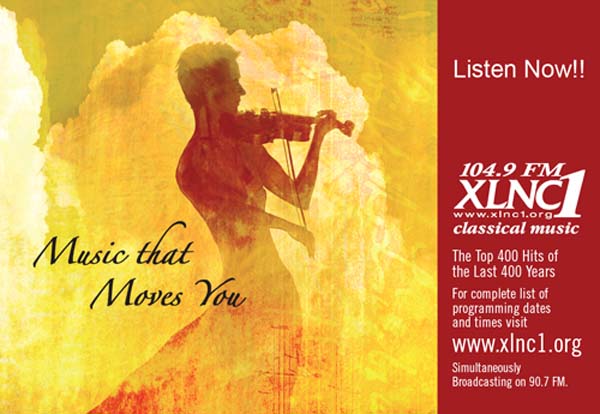
.

Editor's Note: We continue our presentation of the songs of Hal Wingard, moving this week to songs he wrote on the theme of household pets. Here is a link to an index of Wingard's songs published by San Diego Jewish World. To hear Hal performing the song, click on its title.
# 14, The Dog, The Cat And Me
The rain came pounding down so hard
It washed away the whole backyard,
Leaving there beneath a tree--
A dog, a cat, and me.
Oo-ee, oo-ee, oo-ee, oo-ee.
So, standing captive by the rain,
In misery we shared our pain,
Hoping soon that we'd be free--
The dog, the cat, and me.
Oo-ee, oo-ee, oo-ee, oo-ee.
But hours out of minutes grew,
And there was nothing we could do
But fret about wet misery--
The dog, the cat, and me.
Oo-ee, oo-ee, oo-ee, oo-ee.
The dog began to bark and growl.
The cat she spat a hissing howl.
The rain's no place for beast to be--
The dog, the cat, and me.
Oo-ee, oo-ee, oo-ee, oo-ee.
The feline flung an outstretched claw
Against that growling canine's jaw.
The canine turned in angered fright,
And from my leg he took a bite.
Then both ran off into the rain,
Leaving me in soggy pain.
That's why since then you'll never see--
A dog, a cat, and me.
Oo-ee, oo-ee, oo-ee, oo-ee.
#153, Have You Hugged Your Cat Lately?
(Meow . . . meow . . . )
Have you hugged your cat,
Given him a pat,
With the meaning that
Love won't end?
Have you tried to please
With a tender squeeze
Showing him that he's
Your best friend?
'Though he puts on airs,
Gives you hostile stares,
Shows he never cares
What you say.
Still, you can't be slow
In the love you show.
Ev'ry cat must know
He's O. K.
(Meow . . . meow . . . )
'Though your cat acts cold,
Always uncontrolled
Any time he's told
To obey,
When you hug your cat
With a loving pat,
It is certain that . . .
(Meow)
He will stray!
(Meow)
.
#278, Boasting
An unsuspecting mouse
Had strayed into our house,
Completely unaware
A cat resided there.
The cat, as cats will do,
Attacked the poor mouse, who
Had given little thought
To chance of being caught.
“Take that, you dirty rat!”
Exclaimed the pouncing cat. . .
A feline demonstration
Of gross exaggeration.


ADVENTURES IN SAN DIEGO JEWISH HISTORY
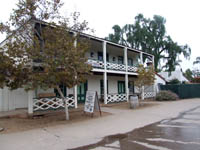
Robinson-Rose House
|
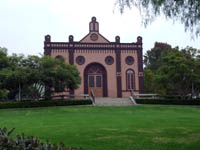
Old Temple Beth Israel |
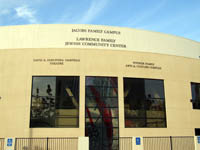
Lawrence Family JCC |
Editor's Note: We are reprinting news articles that appeared in back issues of various San Diego Jewish newspapers. You may access an index of the headlines of those articles by clicking here. You may also use the Google search program on our home page or on the headline index page to search for keywords or names.
Prof. Sheldon Warns of Bundist revival
From Southwestern Jewish Press, April 10, 1947, page 1
Professor James H. Sheldon, administrative chairman of the non-sectarian Anti-Nazi League, said here last week that his organization has uncovered evidence of an underground pro-German movement in the United States under virtually the same leadership as the German-American Bund of pre-Pearl Harbor days.
Professor Sheldon referred to the revived Bundist group headed by Kurt Mertig and now under investigation by Congressman McDowell in a subcommittee of the Un-American Activities Committee. The pro-German drive, he said, is participated in by virtually the entire German-American press and b all such organizations as the Steuben Society…and by such sympathy fronts as the outfit calling itself American Relief for Germany, Inc, a group which talks of relief but whose committees are filled with former Bundist or Hitler fellow-travelers.
We Were There
From Southwestern Jewish Press, April 10, 1947, page 1
By Albert Hutler
By flickering candle light in a displaced person’s camp—in the clean white dining hall of hospitals and sanitariums, in orphanages and in homes for the aged, on cooperative farms and in crude dwellings throughout Europe, Jews are celebrating the feast of Passover again this year.
Men, women and children are sitting down together to observe the deliverance of their ancestors from Egypt more than 3,300 years ago and to celebrate their own deliverance from Nazism.
And yet, these people are not free. They are figuratively and literally still behind barbed wires. Many continue to live in displaced persons’ centers like Bergen-Belsen which was once a concentration camp and where they saw their families murdered in crematories and gas chambers. Is it freedom when they have no privacy and still continue to live in barracks buildings, 30 and 40 to a room? Is it freedom when they wait in line for hours for their meal of coffee and bread or thick soup? Is it freedom when they continue to live in lands which do not want them, on an earth which is drenched with the blood of their children, in a land where they themselves do not wish to remain?
Passover 1947 and the Jews of Europe sit at their Passover table as the sun goes down and observe their deliverance from Nazism. Their hopes are based upon what the American Jews will do. They do not ask for charity. They ask only for opportunity. We are the only ones who can give them that opportunity. All over the United States Jews who understand the problems deem it a privilege to give so that the Jews of Europe may have hope. The hearts of the Jews of San Diego are not different than the Jews in other cities. Give them hope through your contribution to the United Jewish Fund.
Eminent Speakers to Appear in San Diego This Week
From Southwestern Jewish Press, April 10, 1947, pages 5, 8
David Coleman, president of the Fourth District of B’nai B’rith, will make his official visit in San Diego next week. On Monday evening, April 14, he will be the guest speaker at an open meeting of Lasker Lodge B’nai B’rith and before the meeting will be honored guest at a dinner at the U.S. Grant.
Mr. Coleman is a graduate from the University of Utah, attended Harvard and U.S.C. Law Schools, and received the degree of Doctor of Jurisprudence from the latter institution. He is a former Deputy District Attorney for Los Angeles county, and at one time served on the editorial staff of the Los Angeles Examiner. He is past president of Los Angeles Lodge of B’nai B’rith, and was for many years president of the Sigma Alpha Mu Alumni Association of Los Angeles.
At present he is serving as a member of the board of the Federation of Jewish Welfare Organizations, the Los Angeles Jewish Community Council, the Federated Jewish Employment Bureau, and the Jewish Committee of Personal Service
*
The San Diego Chapter of the Zionist Organization of America and Hadassah will present Rabi Jerome Unger at an open meeting on Tuesday, April 15, at 8:00 p.m. at the Temple, Third and Laurel streets. Rabbi Morton J. Cohn will be chairman for the evening. Mr. Al Slayen, president of the Zionist Organization, and Julia Steinman, present of Hadassah, announced that there will be no solicitation of funds.
Rabbi Unger, Executive Director of the Committee on Unity for Palestine of the Zionist Organization of America, served for eleven years as rabbi of Vassar Temple in Poughkeepsie, N.Y., and prior to his present position, was field director for the committee working with Rabbi Arthur J. Lelyveld from February to November 1946.
He was the representative of the Jewish people at the dedication last April of the late President Franklin D. Roosevelt’s Hyde Park estate as a national shrine; has been chaplain at the U.S. Military Academy, West Point; U.S. Disciplinary Barracks, Green Haven, N.Y., and on the Military Police Guard of President Roosevelt’s Hyde Park Estate.
Rabbi Unger was the Dutchess County, N.Y., representative of the Anti-Defamation League of B’nai B’rith. A member of the Central Conference of American Rabbis, he is New York State vice chairman of its Church and State Committee, and a member of the Committee eon Religious Education.
During Rabbi Unger’s visit in San Diego, he will address the student body at San Diego State College, and arrangements are being made for him to make radio broadcasts, speak before civic groups and with civic leaders in the city.
{Return to top}


SAN DIEGO JEWISH WORLD THE WEEK IN REVIEW
Middle East
Hamas will rebuild during the ceasefire by Shoshana Bryen in Washington D.C.
San Diego County
Russert's death prompts walking regimen by Donald H. Harrison in El Cajon, California
San Diego Jewish Trivia: Journalists by Evelyn Kooperman
Adventures in San Diego Jewish History
—March 20, 1947: UJF Youth Division Organizes
—March 20, 1947: Sergeant Inspires Youth Division
—March 20, 1947:‘Personality’ Talk Impresses TYL
Arts
—L'il Noodle, a kid who'll steal your heart by Cynthia Citron in Los Angeles
United States of America
Jews are Obama’s base, not his problem by J. Zel Lurie in Delray Beach, Florida
San Diego
Orthodoxy and sports juxtaposed at gala by Donald H. Harrison in San Diego
Obituary: Isadore Horne, Holocaust survivor, 92 by Donald H. Harrison in San Diego
The Arts
The Jewish history of the Incredible Hulk by Rabbi Simcha Weinstein in New York
Adventures in San Diego Jewish History
—March 20, 1947: Pioneer Women
—March 20, 1947:Appeal for Seder Home Hospitality for Servicemen
—March 20, 1947:B’nai B’rith Presents Wheel Chairs to Hospital
—March 20, 1947:Carl Esenoff to Head Jewish Welfare Society
|
|
